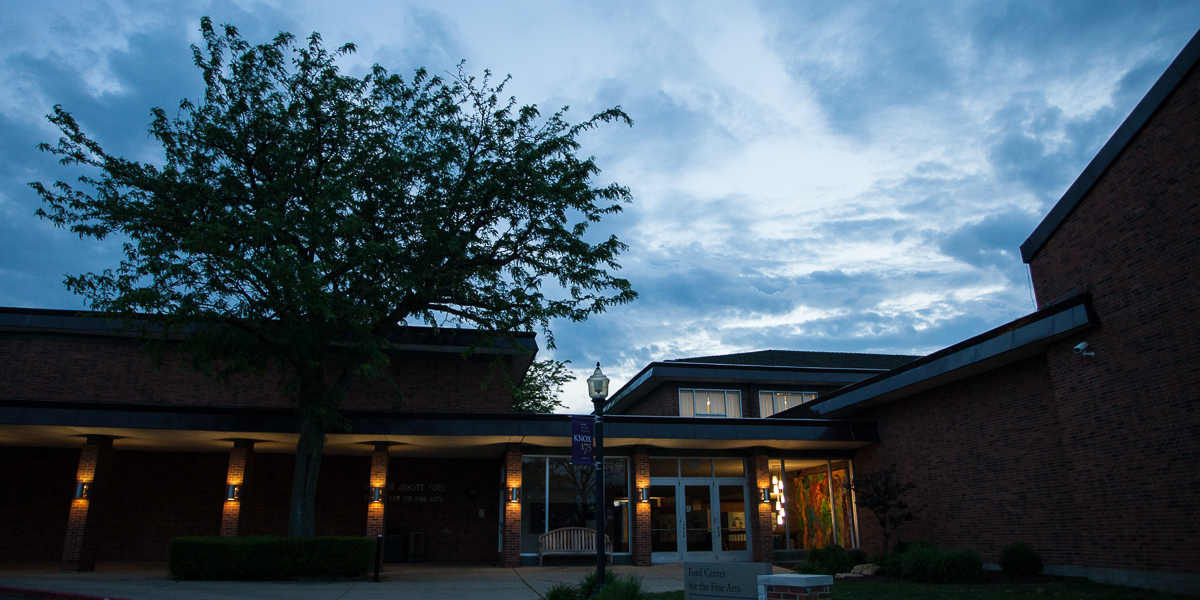

Venture Boldly

Adriana Colindres
Features Editor
2 East South Street
Galesburg, IL 61401

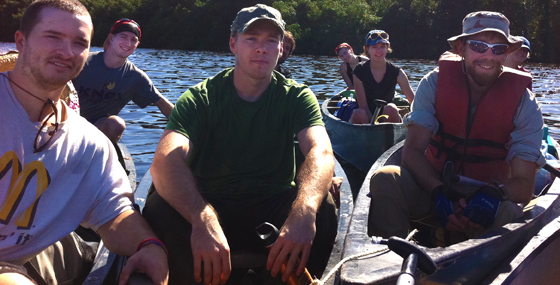
Nine Knox College students canoed and camped through the Florida Everglades during their 2011 winter break. The experience was an extension of a fall term class they took about U.S. national parks, taught by Nic Mink, visiting assistant professor of environmental studies.
The students on the trip kept journals to record their thoughts and activities along the way. Some of their postings and photos appear on this Web page. (The group was out of communications range for several days, so some posts did not arrive until days later.)
For more background about the trip, read this article.
--
From Nic Mink, a recap of the experience.
Friday, December 9:
Some call it a swamp, others a wetland, but there is, perhaps, no more fragile, unique, or magnificent ecosystem in the United States than Florida's Everglades.
But it's more than that: It's home to hundreds of species of fish, wading birds, plants, and mammals. It's one of the world's great biodiversity hotspots. It's a UNESCO World Heritage site. It's the first American National Park created to protect to the biological integrity of a landscape. It's the largest ecological restoration project the world has ever known.
It's also a place close to my heart: I grew up on its outskirts, in an enclave just west of Miami named Hialeah. My family and I visited the Everglades several times a year.
My dad and I hunted (with binoculars and cameras) for roseate spoonbills, wood storks, and alligators at the park during many a twilight. We took picnics there. I drank its waters every day.
We drove across it, on Tamiami Trail, to visit my family in Naples. I spent one of the coldest nights of my life there, on a camping trip in fourth grade, after a freak cold front blasted through Florida's stern Easterlies.
I thought I knew the Everglades. Until I took this trip.
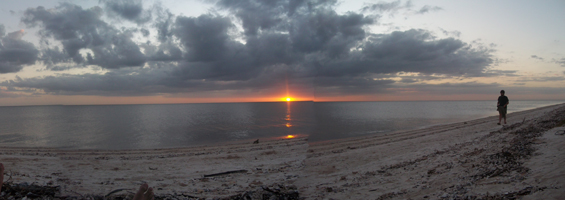 There's something invigorating, exhilarating, scary, and frightening -- all rolled into one -- about spending so much time exploring such a remote, some might say forbidden, landscape.
There's something invigorating, exhilarating, scary, and frightening -- all rolled into one -- about spending so much time exploring such a remote, some might say forbidden, landscape.
But it produces unrivaled intimacy, a knowledge of place so deep and profound that it's somewhat frightening. Very few people will ever experience what we did -- 10 days, just us, canoes, and the natural world that seeds all our being -- in one of the most magnificent places this earth has yet birthed.
--
From Aaron Barton, a Knox College senior from Galesburg, Illinois, who is majoring in environmental studies. Here, he discusses Everglades wildlife.
Thursday, December 8:
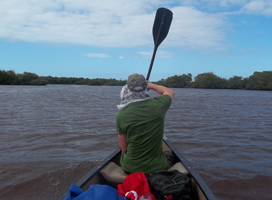 If someone wants to experience wildlife, there is no better way to do it than in a canoe. The beauty of canoes is that they have no motors, so they are quiet, which allows you to get up close and personal with the wildlife.
If someone wants to experience wildlife, there is no better way to do it than in a canoe. The beauty of canoes is that they have no motors, so they are quiet, which allows you to get up close and personal with the wildlife.
We got to experience a wide variety of unique, rare and endangered Everglades wildlife.
The most beautiful animal we saw would have to be the roseate spoonbill. They are rare birds in south Florida, and we saw probably 40 of them total. They have the same pink coloration as flamingos.
They are aptly named because their bills look like spoons.
Four of us guys went on a fishing/oyster-hunting trip while at Highland Beach. While paddling into a bay, we saw about 10 of them. Then, we canoed about 10 yards away from three of them.
The next morning, a flock of 10 spoonbills flew over our camp into the rising sun.
The afternoon we got to the beach, we were greeted by the dorsal fins of bull sharks popping up above the water's surface. The sharks came right up to our canoes because they were hunting fish that were trying to use our canoes as shelter.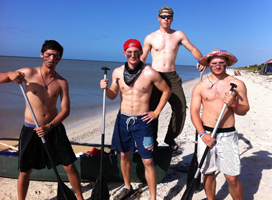
We also saw the classic alligators and crocodiles that come to mind when thinking of the Everglades.
They were best described by the late, great Steve Irwin as modern-day dinosaurs. When you get within 10 feet of one of these, you can easily see how primitive they look and you can't help but feel a little adrenaline surge.
Knowing that you are not at the top of the food chain made me nervous. Driving along the Tamiami Trail, we saw more in a mile-long stretch than during the entire time canoeing. They just lined the banks of the canals.
In some of the larger bays, we saw dolphins surfacing and hunting fish along the banks. We also saw a rare, endangered wood stork. They are a very important species that show the overall health of the Everglades ecosystem.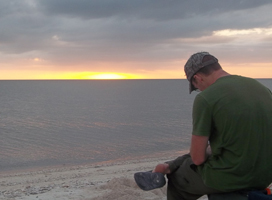
While on one of the chickees (shelters), an osprey clenching a fish in its talons was silhouetted by the orange, red, and yellow glow of the sunset. We saw other animals like egrets, ibises, a bald eagle, fish, pelicans, seagulls, crabs, and hordes of mosquitoes, just to name a few. (Photo above left: Aaron Barton paddling. Photos at right: Students on Highland Beach.)
--
From Nora McGinn, a Knox College sophomore from Peabody, Massachusetts.
Thursday, December 8:
Today, we emerged from the Everglades. The reintroduction into civilization was abrupt and difficult. Seeing pavement, tourists with sneakers, National Park Rangers, cars, power lines, and cell phone service was hard to deal with initially. However, after a delicious seafood lunch, which included much stone crab, and phone calls to our mommies, civilization (seemed better).
--
From Aliya Haykus, a Knox College junior from Pagosa Springs, Colorado, who is majoring in psychology.
Sunday, December 4: 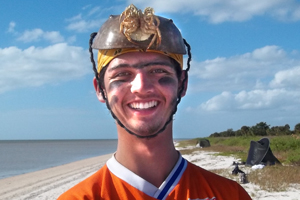
Our group canoed to Highland Beach, the most secluded beach in Florida and a haven for saltwater crocodiles, deer, and sharks.
The immensity of life present at this remote beach is a testament to the depth of wilderness we were traveling through. As we approached the beach, we instantly became acquainted with a saltwater crocodile bathing in the shallows offshore and many black tipped reef sharks surrounding our canoes.
As we landed on shore, we noticed the immensity of shells as far as the eye could see. We were stepping on layers of intact, brilliant shells.
We were even more enamored that we had the entire beach to ourselves. The silence was incredible, and the private sunsets were breathtaking.
We spent the next two days bathing in the sun, collecting shells, catching enormous blue crabs, clams, and scallops, and becoming incredibly sandy. (Photo above right: Jamie Jang on the beach.)
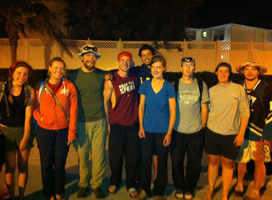 Highland Beach was our private beach paradise. This experience gave us the chance to see what the beaches in Miami and Fort Lauderdale were at one time, an estuary throbbing with life. We were able to explore these mud flats in low tide and paddle through them in high tide.
Highland Beach was our private beach paradise. This experience gave us the chance to see what the beaches in Miami and Fort Lauderdale were at one time, an estuary throbbing with life. We were able to explore these mud flats in low tide and paddle through them in high tide.
This lull in the intensive paddling also provided a glimpse into the minds of the rest of the group. Finally rested, we unwound and bonded through this incredible experience of relaxation away from the rest of humanity.
By the time we left Highland Beach, we were tan and saltwater-kissed with the gift of Florida's original white sand beaches and their ability to harbor life.
--
From Dexter Brown, a Knox College senior from Saint Joseph, Minnesota, who is majoring in environmental studies.
Saturday, December 3: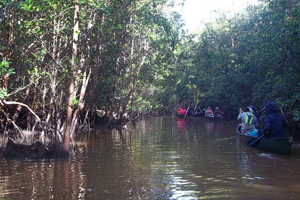
The Nightmare
We rose before sunrise and with flashlights and headlamps headed toward the daunting Nightmare Canal. (Nick Mink described the Nightmare as "the most treacherous section of the Everglades thru-paddle," most of it passable only at high tide.)
On the way, we navigated the Broad Creek, which was anything but broad.
We reached the Nightmare not knowing what to expect, not even our fearless leader having seen it before.
We entered and were immediately swarmed by mosquitoes and a horrid stench of sulfur. Layers of clothing and bug spray protected our already bug-bitten bodies.
Through the thick spider webs and mangrove roots we weaved down the shaded corridors.
It seemed, at points, that our route was impassable (because we had to) cross fallen trees and extensive mangrove branches, but we emerged from the Nightmare with small scratches and a sense of accomplishment.
--
From Cale Dahm, a Knox College senior from Lincoln, Illinois, who is majoring in educational studies and social science education.
Wednesday, November 30:
Today, we departed from our campsite in Flamingo out into Florida Bay, and we canoed 13 miles up the Wilderness Waterway.
Along the way, we saw multiple types of birds, including little blue herons and white ibis, two small crocodiles, and several dolphins that at one point seemed to be following our canoes.
After navigating our way through the mangroves, we arrived at the South Joe River Chickee (a shelter), where we enjoyed a delicious stir-fry dinner prepared by the group.
--
From Jamie Jang, (below, packing a canoe) a Knox College senior from San Carlos, California, who is majoring in environmental studies.
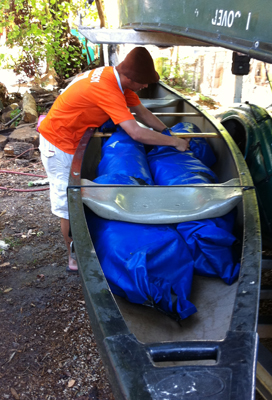 Tuesday, November 29:
Tuesday, November 29:
I've got a feeling it's going to be tough to sleep tonight. I am getting really excited, and we are now completely isolated (no cell phones, no outside contact).
We went (earlier today) to the Everglades Hostel, where the friendly staff brought us to Flamingo, and they will bring our van up to Everglades City, about 100 miles away.
We met with Dan Blankenship, a National Park Service interpreter, who told us a lot about how the NPS tries to manage the ever-so-complex ecosystem. Many complications arise because all the water necessary for the wildlife herein comes from the north.
We drove through this entire area, from Lake Okeechobee through the big sugar fields and through the water management areas. It is very interesting to see all the different forms this land takes.
Despite these water problems, sitting here gives me quite a different feeling. There are gators hanging out near the lake here, and they say we might even be able to see an American crocodile.
Lots of us seem to be scared about the potential of seeing a python, an invasive species in these parts that has really taken off. I hope any encounter is peaceful. We will have plenty of opportunities to run into these snakes and other creatures.
We'll begin our long escapade tomorrow morning. From Flamingo, we'll load our canoes and head through Whitewater Bay.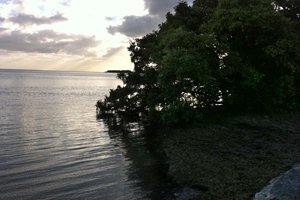 (Photo at right: The view from the campsite at Flamingo.)
(Photo at right: The view from the campsite at Flamingo.)
For 10 days, we'll paddle over 10 miles each day, leaving in the morning and reaching our campground by 3 p.m. We have "campfire talks" every night, even if we have no campfire.
There already has been great bonding between everybody in this group. I think we're all very excited (some maybe a little scared) to get deep into the wilderness.
--
Monday, November 28:
Shortly after arriving in Florida, the group sent this photograph of Nic Mink teaching Knox students about Lake Okeechobee, the headwaters of the Everglades.
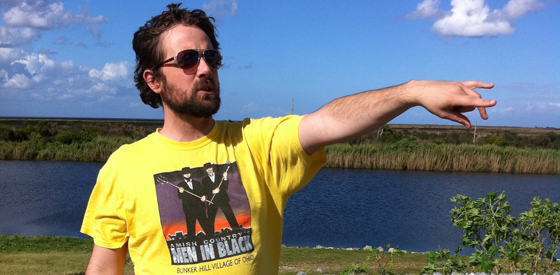
--
From Emily Cooney, (below, right) a Knox College sophomore from Indianapolis, Indiana, who is majoring in environmental studies.
Monday, November 28: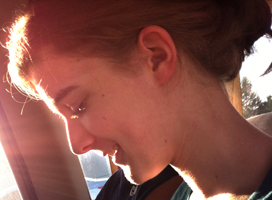
We talked to Erica Robbins, the outreach specialist at the U.S. Army Corps of Engineers, today. She gave us a background of the Everglades and also insightful information about the future of the Everglades' restoration.
Restoration in the Everglades is difficult because of everything and everybody you need to take into account. She said that it is never as easy as doing what is right in order to restore water flow in the Everglades. There are always going to be people who disagree with what happens.
She also said that you have to take into consideration the quality, quantity, timing, and distribution of the water flowing from Lake Okeechobee. For example, there is a huge agricultural area south of Lake Okeechobee that blocked the flow into the Everglades.
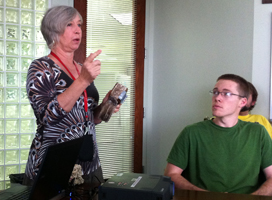 Now, more water must be pushed south, and one option is to go through this area. However, this is not beneficial to do because the water will be sucked up, and the area contains bad nutrients that will contaminate the water as it flows.
Now, more water must be pushed south, and one option is to go through this area. However, this is not beneficial to do because the water will be sucked up, and the area contains bad nutrients that will contaminate the water as it flows.
Another aspect she talked about was what the Corps' future plans are for the Everglades.
There are many areas that are already undergoing restoration work. This includes creating storage areas and storm treatment areas. The approval for projects comes through Congress, and then the Corps talks to the stakeholders and makes a plan of how to accomplish them.
This talk will help us when we start our canoe expedition because we now know what is being done currently in the Everglades and how complicated it is to get any projects completed.
As we go into the next stage of our journey, we will appreciate the work that has already been done because of the difficulty of this process.
(Photo above, left: Erica Robbins speaks to the Knox College group, including senior Aaron Barton.)
--
From Forrest Rackham, a Knox College junior from Pagosa Springs, Colorado, who is majoring in environmental studies.
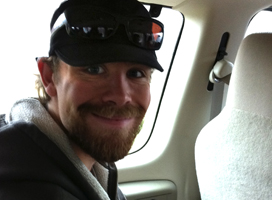 Sunday, November 27:
Sunday, November 27:
Finally, after days and months of anticipation, we are on our way to the Florida Everglades.
Much time has gone into our preparation efforts. It is still unbelievable that we are on the road.
The opportunity to explore such a foreign, (for most of us) and unique landscape is finally being realized, and the question now becomes: What will it be like?
We have been immersed in all the appropriate literature about the Everglades, and further buried by the avalanches of information our projects in National Parks (class) demanded. How will the concepts we have been exposed to manifest themselves?
All our preconceptions about South Florida and the Everglades have been built up; now it's time to challenge them. Certainly we will be able to engage Everglades National Park in many deeper and more intellectual ways than we would have been before our class.
Understanding that Everglades National Park is in its entirety, a human construction, an attempt at creating a museum still out of a dynamic landscape, completely changes the way we will experience the park.
Similarly, our knowledge of the complexities of managing a park for both human enjoyment, and the preservation of the natural, will make our viewings of the park all the more interesting and engaging.
Finally, this trip is our chance to break away from technology and society for a few days. So much of college life is built around computers, e-mails, i-Phones, and every other gadget, which means we get a rare opportunity to unplug, take a look at our surroundings, and get to know the person in the canoe with us.
Everglades, here we come!
--
From Audrey Todd, a Knox College senior majoring in international relations. She grew up in Duxbury, Massachusetts, and Arvada, Colorado.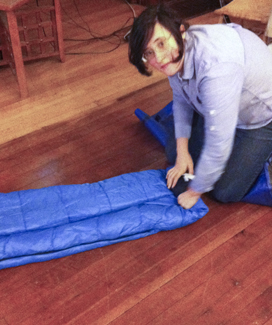
Saturday, November 26:
I am really looking forward to better developing my own idea of what U.S. national parks are for and how they should be used.
Will I later stress the accessibility aspect of the mission statement of the parks or will I stress the conservation of these landscapes for future generations? Should humans leave no trace or can they be beneficial to landscapes?
Learning about the Miccosukee Tribe of Florida that has lived within the Everglades for generations and generations has opened my eyes to the idea that nature should not be thought of (as) separate from humans. These Native Americans and many before them have shaped the way the Everglades looks in important ways, but those ways have not affected the ecology in a negative way.
I feel like after this trip I will better understand how to "leave no trace" in some ways, but also be able to have a positive and lasting impact upon this important landscape spiritually and physically. I cannot wait to get going tomorrow at 5:45 a.m.!
Published on December 09, 2011